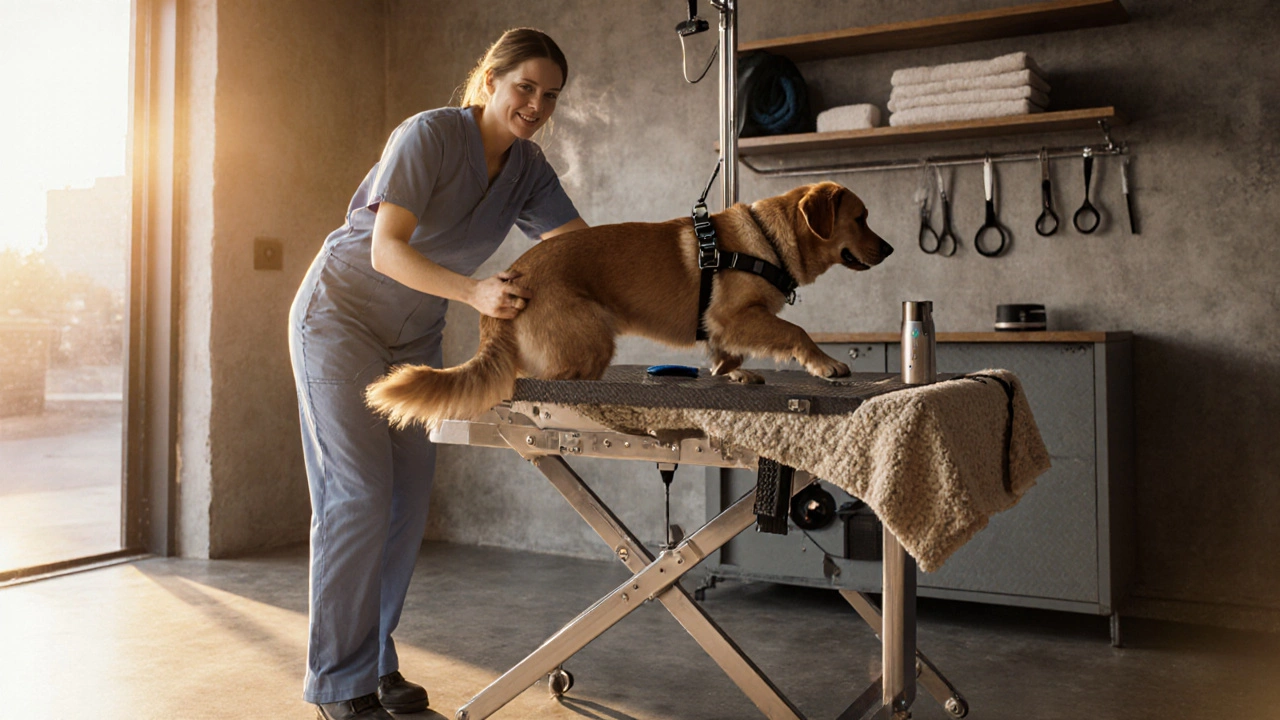Veterinary Calming Medication – What Every Dog Owner Should Know
When it comes to veterinary calming medication, medicines prescribed by vets to ease canine anxiety, stress, or travel nerves. Also known as prescription anxiolytics, it offers a controlled way to help pets stay calm under challenging situations. Veterinary calming medication isn’t a magic pill; it works when you pair it with good handling, a safe environment, and a clear understanding of why your dog is unsettled.
Key Players in the Calm‑Dog Equation
First, consider dog anxiety, a stress response that can cause trembling, excessive barking, or destructive chewing. This anxiety can stem from fireworks, vet visits, separation, or a new home. When anxiety spikes, many owners reach for a calming collar, a pheromone‑based device that releases a scent mimicking the mother’s comfort. Collars are useful for mild situations, but they don’t replace medication when the stress is moderate to severe.
For stronger cases, vets may prescribe prescription sedatives, controlled drugs like acepromazine or trazodone that lower nervous system activity. These sedatives differ from over‑the‑counter calming treats because they require a dosage plan, monitoring for side effects, and a clear reason for use. Proper dosage is crucial: too little does nothing, too much can cause lethargy or disorientation.
Understanding the link between dog anxiety relief and medication helps you choose the right tool. A typical semantic triple looks like this: Veterinary calming medication encompasses prescription sedatives. Another: Effective anxiety relief requires proper dosage and veterinary guidance. And a third: Dog anxiety influences the need for calming medication. These connections show why you shouldn’t treat a pill, a collar, or a behavior plan in isolation.
Besides meds and collars, stress management techniques, routine exercise, safe chew toys, and gradual exposure to triggers play a big role. Combining a short walk before a flight with a low‑dose calming tablet often yields better results than the tablet alone. Similarly, using a calming collar during a thunderstorm while providing a quiet den gives your dog multiple layers of comfort.
When you talk to your vet, expect a conversation that covers three main attributes: the underlying cause of anxiety, the safest medication option, and a monitoring plan. Vets will ask about your dog’s breed, age, health history, and any current meds to avoid drug interactions. They may also suggest a trial period, followed by a check‑in to adjust dosage or switch to a different product.
Below you’ll find a curated collection of articles that dive deeper into each piece of the puzzle. From training tips that prevent anxiety in the first place to detailed reviews of calming collars and prescription options, the posts are organized to give you quick, actionable insight. Explore the range of advice, compare real‑world experiences, and pick the approach that fits your dog’s unique temperament and your lifestyle.
Do Dog Groomers Use Calming Aids? What You Need to Know
Explore whether dog groomers use calming aids, the types available, safety rules, and how to ensure a stress‑free grooming session for your pet.
